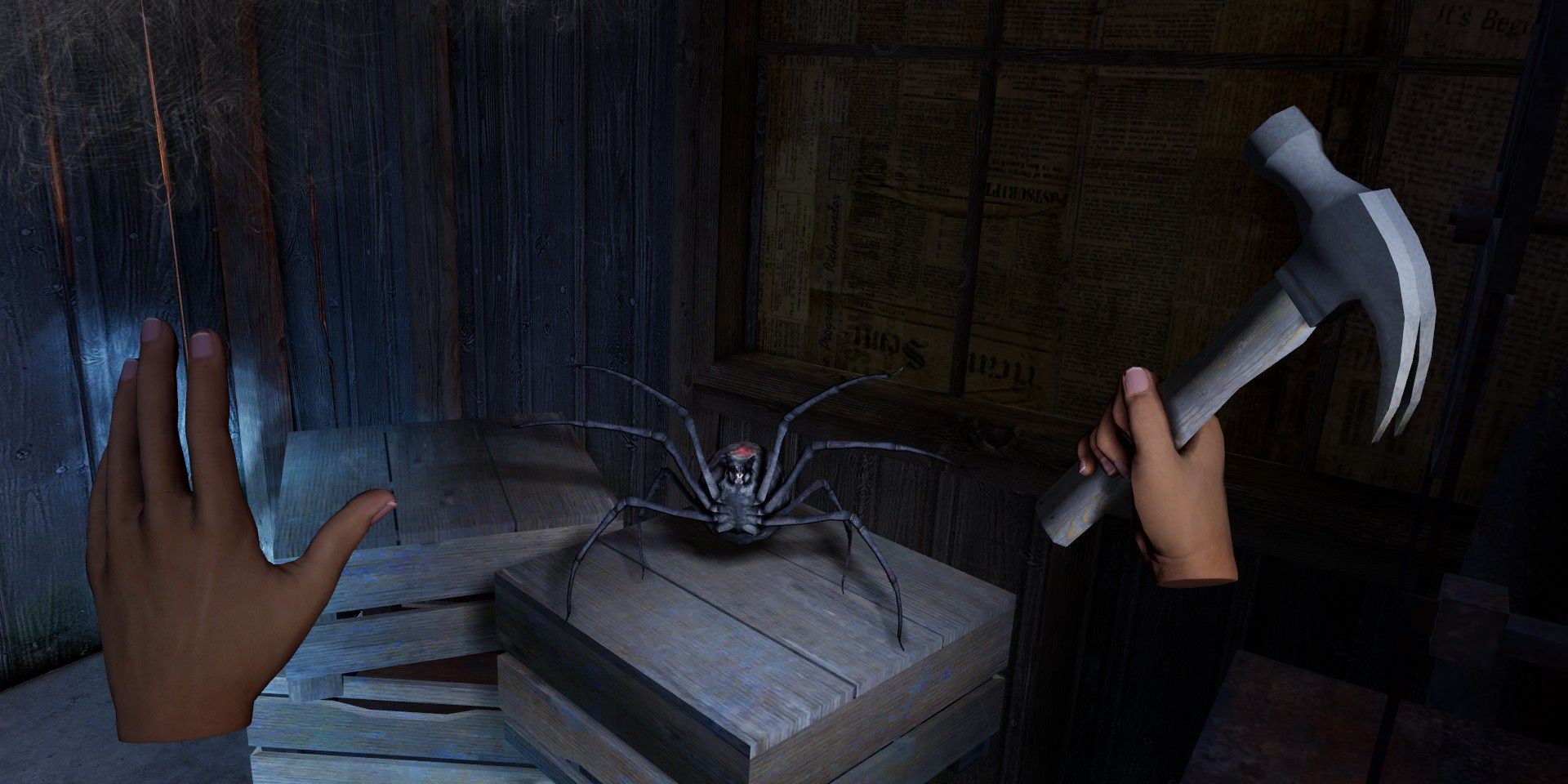The promise of virtual reality has always been the ability to simulate absolutely anything, allowing users to have unimaginable experiences that could never be replicated in the real world -- so, naturally, a group of scientists has decided to use it to shove spiders in Oculus Quest users' mouths.
As reported by PC Gamer, a group of researchers at Carnegie Mellon University's Feature Interface Group have created a new way to deliver haptic feedback to players' mouths in virtual reality. The effect is achieved by affixing a large board covered in ultrasonic transducers to the bottom of an Oculus Quest 2, positioned so that it points directly at the user's mouth. The transducers emit ultrasonic energy, creating a variety of sensations on the lips and teeth.
A video demoing the new hardware shows a handful of potential applications. In one situation, a user takes puffs from a cigarette while the haptics provide a steady vibration simulating the actual experience without the presence of a real cigarette. In another, wind flies across a user's face while they ride on a simulated motorcycle.
In the most game-like (and horrifying) demonstration, the user pushes their way through a spider-web while the ultrasonic transducers tickle their lips. Once they're through, they find a spider's nest, where a spider clings to their face and frantically tries to enter their mouth. The user kills the spider with a flare gun, and the transducers simulate spider-guts splattering in their face. After that, an even bigger spider appears and oozes even more spider-guts down.
Some of the applications of ultrasonic mouth-haptics seem downright pleasant. Riding through the countryside with the wind in your face sounds like a lovely time, and users who demoed the technology reported increased immersion and presence in the virtual world when using it compared to demoing the same experiences without mouth haptics. The idea only becomes a little horrifying when one remembers that the experience they were demoing was having spiders claw their way into their mouths.
The hardware developed by Carnegie Mellon's FIG Lab is not yet consumer-ready, although the video demonstration does focus on bringing more haptic feedback to consumer virtual reality. If the ultrasonic device ever does make it to market, one can only hope that its applications lean more in the direction of going on coffee dates with actual coffee in VR Chat and less in the direction of having Las Plagas shoved down the player's throat in Resident Evil 4 VR.
Source: YouTube via PC Gamer

